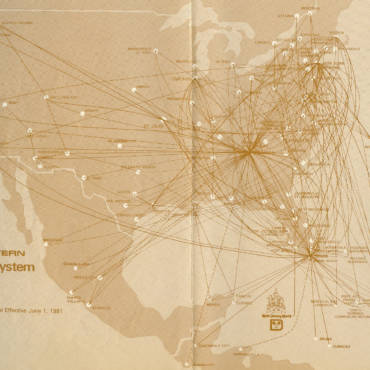Turning Your Corporate Narrative Into A Reputation Risk Mitigation Toolbox.
By John Patterson
Written for Risk & Compliance Magazine
In the reputation economy of the 2010s, leading organizations have realized that enhanced corporate storytelling about enterprise-wide values and behavior trumps narrow product feature and benefit messaging . The best corporate narrative can properly align your organization’s vision for the future, its current capabilities and your performance on rising stakeholders expectations from the workplace to the marketplace. However, integrating a corporate narrative (the why, what and how of an organization’s call to action) deep into an organization has profound implications on reputation risk assessment and mitigation.
Creating the business rationale for active reputation management is a crucial first step for most multinational organizations on their reputation journeys. The 2008-2009 global financial crisis helped to crystallize the need for most companies to align their leadership behind an integrated company purpose, and a refined definition of their stakeholder map beyond the ‘Holy Trinity’ of customers, investors and employees.
The next step is often the creation of a corporate narrative as part of a comprehensive reputation strategy. We define a corporate narrative as a defined set of messages that build internal alignment around the current business environment, corporate values and business strategy along with external relevance around how a guiding idea can safely deliver three to four reputation promises across multiple stakeholders and geographies. Once the corporate narrative is developed, there is often the temptation (not to mention a host of examples across the G20 markets) to move immediately into integration mode in order to activate the corporate narrative and use it liberally across internal and external touchpoints (think paid, earned, shared and owned channels). This usually happens when the new corporate narrative is seen as more of an image campaign or a response to an industry or a company shortcoming — in other words, an irresistible chance to play offence with your firm’s reputation capital.
However, a corporate narrative should be thought of as a life preserver in troubled waters that needs to ensure adequate reputation management and accountability safeguards are implemented before it is deployed far and wide. There are four specific focus areas that organizations need to account for, and invest in, to develop the right competencies to ensure that reputation risks are adequately addressed and mitigated. Firstly there is collaboration and relevance, ensuring that corporate reputation strategy is more than a tagline and enabling multiple internal stakeholder groups to do their jobs better. secondly there is annual planning and simulation, building tools and processes that help ensure cross-stakeholder expectations are being used as core criteria in developing and testing business plan priorities and specific programs and initiatives Thirdly, there is focus on cross-functional management, managing corporate reputation across business and functions, based on clear priorities, responsibilities and Key Performance indicators (KPIs). Finally, companies should hold senior executives accountable for corporate reputation performance through KPls that are reported externally.
Corporate narratives are much more than a tagline using the corporate narrative as a filter to think through reputation risk governance at a macro level is an emerging best practice. When reviewing an existing reputation risk set-up, a strong corporate narrative (specifically the three to four reputation promises) can help identify best practices in reputation risk by industry or geography, and should also inform the gap analysis that leads to recommendations and actions to close those gaps.
At the specific risk level, the foundational research behind the corporate narrative can help speed up risk identification, not to mention the assessment and prioritization of reputation risks. Having an understanding and appreciation for which issues negatively impact different stakeholders’ perceptions of the organization – plus being able to combat and defend against those issues with specific reputation promises around governance or workplace or citizenship – gives the company a leg up in reviewing and deciding on short term actions as well as specific reputation risk mitigation strategies for the long term.
A diverse set of market leaders from different industries including ltau, Pirelli, P&G and the us Farm credit system are starting to use reputation data and insights to rethink their approaches to crisis planning and communications. Even though academics and practitioners alike agree there are still only four kinds of crisis scenarios (forum of public opinion, financial difficulty, litigation and events), the traditional four tenets of a crisis plan are being reshaped accordingly. The first key tenet relates to high value items on issues management, i.e., what is at stake from a stakeholder ‘heat map’ /dashboard perspective? The second issue relates to reputation event planning as a strategic capability globally, nationally and locally. organizations should not rely on the crisis ‘plan’ as a purely tactical set of responses. Firms should also focus on best response practices, which should be continuously updated for social media and proactive engagement before the problem phase. Finally, companies should focus on assessment, data collection and modeling, and evaluation during an actual crisis period, not just post-mortem from a historical perspective.
With a corporate narrative in place, leading organizations can confidently move to implement and integrate the narrative into the business in three main ways. Firstly, via governance, the corporate narrative now serves as the basis of a new charter for the Enterprise Risk Management (ERM) committee (or equivalent governance body in the organization responsible for reputation risk) as it re lates to crisis and reputation management. secondly, via content training and capability development, the corporate narrative is rolled out through the creation of a crisis and reputation management playbook, which takes various forms and functions depending on the organization. scenario war-gaming, templates and diagnostic tools are available 24/7 through the pre-established playbook. At the same time. standard and custom training is created as a combination of live. inperson training. Finally, companies should focus on measuring success The corporate narrative establishes the business case for a reputation risk dashboard that the ERM committee can access periodically in order to assess internal readiness and capacity building to handle future crisis and reputation events. In addition, the narrative also seNes as a catalyst for external stakeholder perception research to determine which issues negatively impacting the organization could call certain reputation promises – or even the larger corporate narrative – into question.
A corporate narrative should be thought of as a life preserver in troubled waters that needs to ensure adequate reputation management and accountability safeguards are implemented before it is deployed far and wide.
Conclusion
It must be sai d that a lack of definition of reputational risk means that companies perceive it in different ways. Many still view reputation as a ‘risk of risks’. Others do not even classify it as a risk category, but instead view reputation as an impact. Reputational risk can originate from a wide range of sources, both within the company and across the broader supply chain. This makes it harder to track and mitigate.
That reputation is hard to manage hasn’t stopped progressive companies from deploying multiyear investments in a corporate narrative that develops specific reputation management competencies that better assess, monitor and mitigate risks that threaten license to operate, talent acquisition and purchase/recommendation behavior. Playing offence with a corporate narrative is a crucial success factor in building out world-class reputation risk management capabilities – proving once again that the best defence can be a good offence.




Add Comment